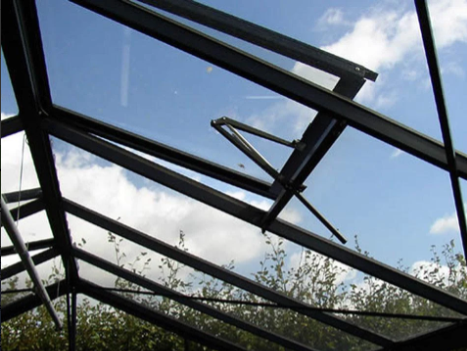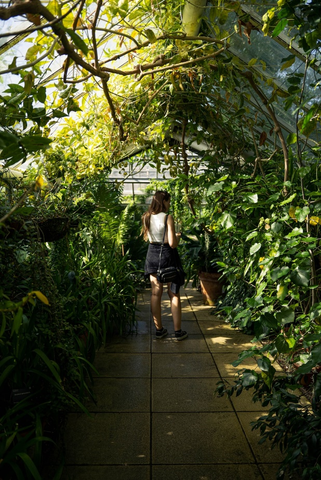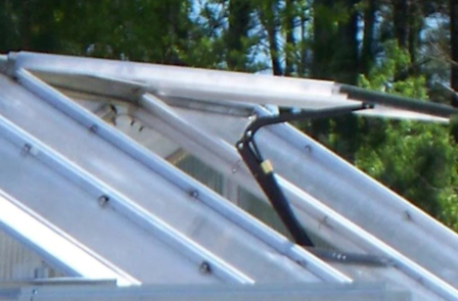Greenhouse vent positioning is a critical aspect of greenhouse management that directly influences the health and productivity of your plants. Properly placed vents help regulate temperature, humidity, and airflow, creating the optimal environment for your greenhouse plants.
In this comprehensive guide, we will explore various strategies, tips, and applications for greenhouse vent positioning, ensuring you get the most out of your greenhouse, including options like the Cross Country Parkside Greenhouses or EOS T-shaped greenhouses.
Understanding the Importance of Greenhouse Ventilation
Before diving into vent positioning, it's crucial to understand why ventilation is so vital in a greenhouse:
1. Temperature Control
Vents allow excess heat to escape during the day, preventing overheating. In colder months, proper ventilation helps retain heat at night, maintaining a stable temperature.
2. Humidity Management
Controlling humidity is essential for preventing mold, fungal diseases, and condensation. Vents help release excess moisture, maintaining an ideal humidity level.
3. Air Circulation
Proper airflow ensures an even distribution of carbon dioxide (CO2) and nutrients, promoting healthy plant growth inside polycarbonate and glass greenhouses.
4. Pest and Disease Prevention
Adequate ventilation reduces the risk of stagnant air, which can attract pests and facilitate disease development.
Now, let's explore strategies, tips, and applications for effective greenhouse vent positioning:
1. Roof and Side Vents for Effective Temperature Regulation
In greenhouse design, roof and side vents play pivotal roles in maintaining an optimal environment for plant growth. Roof vents, strategically positioned at the highest point of the greenhouse structure, leverage the principle of hot air rising during the day. This upward movement of warm air is channeled through the roof vents, effectively expelling excess heat and preventing overheating.
Conversely, side vents, typically situated closer to the ground, serve the purpose of removing cooler air at night when temperatures drop. By combining both roof and side vents, you achieve a balanced airflow system that keeps temperature fluctuations in check, enhancing the health and productivity of your plants. This approach is especially relevant to greenhouse models such as the Cross Country Parkside Glass Greenhouse and Cross Country Legacy 8X8 Glass Greenhouse with Polycarbonate Roof, where effective ventilation is essential.
2. Precision Vent Control with Automated Systems:
Modern greenhouse vent management has advanced significantly with the introduction of automated vent systems. These sophisticated systems are equipped with sensors that continuously monitor temperature and humidity levels within the greenhouse.
Based on preset parameters, these systems autonomously control the opening and closing of vents, ensuring precise ventilation, even when you're not physically present.
3. Strategic Vent Placement for Ideal Airflow
Strategic vent placement is fundamental to efficient greenhouse ventilation. Roof vents should be situated at or near the ridge of the greenhouse structure to harness the natural tendency of hot air to rise. This positioning allows the rapid expulsion of excess heat during the day, preventing overheating. Conversely, side vents are ideally positioned lower to facilitate the inflow of cooler air from outside or from adjacent sections of the greenhouse. This balanced airflow creates a harmonious environment, conducive to healthy plant growth. The significance of proper vent placement applies across various greenhouse models, including Solexx polycarbonate greenhouses and MONT conservatories.
4. Calculating Vent Size to Match Greenhouse Volume
Determining the appropriate vent size is a critical consideration in greenhouse design. A general guideline suggests providing at least 20% of the total floor area as vent space. This calculation ensures that the ventilation system can effectively exchange air and maintain consistent environmental conditions.
5. Fine-tuning Airflow with Adjustable Louvers
To further enhance airflow control, consider the installation of adjustable louvers or shutters alongside vents. These components allow precise adjustments, directing airflow exactly where it's needed. Whether you're using the Exaco Janssens Retro Glass Greenhouse or the Exaco Janssens Royal Victorian VI46 Greenhouse, the ability to fine-tune ventilation ensures a customized and efficient greenhouse environment.
6. Cooling Efficiency with Overhead Roof Vents
During hot days, maintaining a comfortable temperature inside your greenhouse is crucial. Overhead roof vents, strategically placed, are highly effective for cooling purposes. They create a natural chimney effect by expelling hot, rising air through the roof, while simultaneously drawing in cooler air through side vents. This circulation of air helps dissipate excess heat, preventing overheating and promoting optimal growing conditions.
7. Heat Retention Strategies with Vent Adjustments
As winter approaches, adjusting vent positions becomes instrumental in retaining heat within the greenhouse. Closing roof vents at night traps warm air near the plants, preventing temperature drops that could be detrimental to their health. Greenhouse models like the EOS T-shaped greenhouses benefit from this heat retention strategy during the colder seasons.
8. Seasonal Flexibility: Adapting Vent Positions
One of the key challenges in greenhouse management is adapting to seasonal temperature and humidity variations. To address these fluctuations, it's essential to assess your greenhouse's specific requirements and adjust vent positions accordingly. Recognize that winter and summer demands differ significantly, and staying vigilant with seasonal adjustments ensures your plants thrive year-round.
9. Harnessing Natural Ventilation
In addition to mechanical ventilation systems, consider harnessing natural ventilation through doors and windows when conditions permit. This approach can complement mechanical systems, reduce energy consumption, and provide a fresh influx of outdoor air. It's especially valuable in greenhouse models where energy efficiency is a priority.
10. Monitoring and Maintenance for Vent Efficiency
To maintain efficient ventilation, regular monitoring and maintenance are essential. Inspect vents and louvers at regular intervals, ensuring they open and close smoothly. Lubricate moving parts to prevent sticking, guaranteeing seamless operation. This practice is particularly crucial for greenhouse models like the Exaco Janssens Cathedral Victorian Orangerie Greenhouse, where reliable ventilation is paramount.
Buy Quality Greenhouse Vents, Heaters, and Fans At Mulberry Greenhouses!
At Mulberry Greenhouses, we're your partners in cultivating green dreams, and our commitment to your gardening success is unwavering. As autumn paints the world with vibrant colors, our Autumn Sale is in full swing, offering you exclusive deals and unbeatable prices on our finest greenhouse models. Contact us today for more details or shop your favorite greenhouse kits and accessories now!




